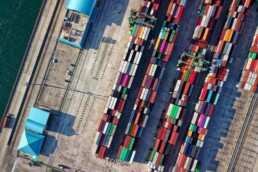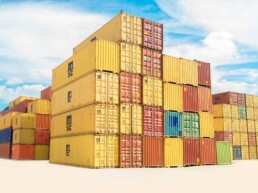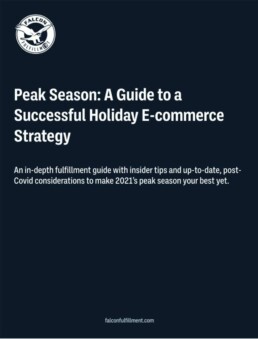U.S. Port Delays Continue Despite Tentative Labor Agreement: Supply Chains Brace for Impact
The tentative labor agreement between the International Longshoremen’s Association (ILA) and the United States Maritime Alliance (USMX) has provided a sense of relief to some, but U.S. port delays are far from over. Even with this agreement in place, significant challenges remain for supply chains across the country. As congestion builds and vessels await clearance, logistics professionals brace for the impact on shipping and delivery, fulfillment services, and overall supply chain management.

U.S. Port Delays Affect Fulfillment Services and Logistics
Although the strike didn’t escalate to its worst-case scenario, the backlog at major U.S. ports will take weeks, if not months, to resolve. The delays have reverberated through third-party logistics (3PL) providers, fulfillment centers, and businesses relying on international shipping. Fulfillment services are expected to struggle with increased demand as inventory management and warehousing efforts are pushed to the brink.
Key ports like Los Angeles and Long Beach, responsible for a large share of inbound and outbound logistics, are experiencing significant congestion. This means that e-commerce fulfillment companies and order fulfillment solutions may need to implement flexible strategies such as cross-docking and freight consolidation to mitigate delays. Furthermore, reverse logistics and warehousing and distribution networks will face strain, impacting last-mile delivery and inventory tracking software systems.
Inventory Management and Supply Chain Optimization Strained
The ongoing U.S. port delays mean supply chains must adapt quickly to avoid complete disruption. Inventory management practices are being put to the test as bulk shipping becomes unreliable, and demand planning becomes critical for meeting customer expectations. Supply chain optimization strategies are being reevaluated to include scalable fulfillment solutions and better integration of 3PL technology solutions. These changes are particularly essential for companies offering same-day and next-day delivery, where delays could severely impact customer satisfaction.
As many companies rely on multi-channel fulfillment and vendor-managed inventory (VMI) programs, the delays are forcing businesses to prioritize orders based on available inventory and expected shipping times. Third-party logistics providers are also playing a crucial role in implementing solutions that help manage the bottlenecks in order accuracy, quality control, and return merchandise authorization (RMA) processing.
Shipping and Delivery Disruptions Across the Nation
One of the most significant impacts of the port delays is on shipping and delivery services. Freight forwarding, freight rate negotiation, and customs brokerage are all facing substantial backlogs. International shipping, particularly import/export logistics, is experiencing longer lead times and higher costs due to the congestion.
Businesses that rely heavily on fulfillment services and shipping, such as e-commerce companies, must look at alternative solutions like dropshipping or leveraging freight consolidation and shipment consolidation services. These methods could offer a temporary reprieve from the current challenges at U.S. ports, but they are far from ideal long-term solutions.
Additionally, third-party logistics companies are scrambling to secure transportation management systems (TMS) and carrier selection and management processes to streamline shipping. Warehousing and fulfillment centers are under pressure to adopt packaging optimization and kitting and assembly techniques to move inventory more efficiently while ensuring order accuracy and on-time delivery.
Warehousing and Fulfillment Centers Feel the Strain
Fulfillment centers and 3PLs across the nation are feeling the ripple effect of the port delays. As goods pile up at congested ports, these facilities must find ways to accommodate surges in inventory. For example, implementing cloud-based warehouse management systems (WMS) allows for better order tracking and management, especially when facing fulfillment cost analysis and scalability challenges.
Warehouse automation is also becoming more critical as fulfillment centers attempt to manage the increased workload without significantly slowing down. Utilizing technologies like inventory forecasting and order splitting and routing can provide some relief, but only if paired with well-executed inventory cycle counts and scalable fulfillment solutions.
With more orders being delayed or rerouted, third-party logistics providers must prioritize safety and security measures in warehousing to prevent loss or theft. Furthermore, value-added services (VAS) such as kitting, assembly, and fulfillment services that enhance order accuracy and customer satisfaction are becoming more important than ever.
Fulfillment Services and Logistics Adapt to U.S. Port Delays
As the U.S. port delays drag on, fulfillment services, third-party logistics providers, and businesses across the supply chain are bracing for a long recovery period. The ripple effect from port congestion is expected to impact order fulfillment solutions, inventory management, shipping, and delivery for months to come.
In the meantime, businesses will need to rethink their supply chain optimization strategies to include advanced warehousing and fulfillment technology. Cloud-based WMS, freight consolidation, and reverse logistics solutions are just a few of the approaches companies can take to ensure they weather the storm. Furthermore, focusing on order accuracy, scalable fulfillment solutions, and flexible fulfillment services will be essential for maintaining customer satisfaction in these challenging times.
Beginner’s Guide to Third-Party Logistics (3PL)
The world of e-commerce is always changing, therefore understanding the roll of Third-Party Logistics is integral to keeping up. In light of this our beginner’s guide to third-party logistics (3PL) will delve into the essential aspects, offering insights into fulfillment services, warehousing, and much more.
Read More…
Whether it’s dealing with last-mile delivery disruptions or managing inventory tracking software, businesses must be ready to adapt. The U.S. port delays highlight the critical role of logistics and fulfillment centers in ensuring that the supply chain keeps moving, even in the face of significant challenges. As the situation continues to evolve, supply chain professionals will need to stay ahead of the curve to minimize disruptions and maintain a competitive edge.
Have more questions or need help with your fulfillment solutions?
Let’s Talk!
Peak Season: A Guide to a Successful Holiday Ecommerce Strategy
An in-depth fulfillment guide with insider tips and up-to-date, post-Covid considerations to make 2021’s peak season your best yet.






